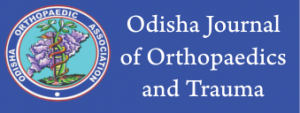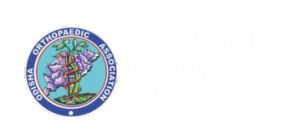From The Editors Desk…
Vol 3 | January 2022 | page: 04 | Satya Ranjan Patra
DOI: https://doi.org/10.13107/ojot.2022.v03i01.024
Authors: Satya Ranjan Patra [1]
[1] Department of Orthopaedics, Health Village Hospital, Bhubaneswar Odisha, India.
Address of Correspondence
Dr. Satya Ranjan Patra,
Chief Consultant, Department of Orthopaedics, Health Village Hospital, Bhubaneswar Odisha, India.
E-mail: ojot.editor@gmail.com
From The Editor’s Desk…..
Our editorial team has always endeavoured not just to improve the quality of the manuscripts but also to help the authors improve their writing skills. Depending upon the type of manuscript we recommend standard guidelines like the CONSORT, PRISMA, STROBE, CARE and STARD. We also recommend IMRaD format while writing the manuscript.
The Introduction, which is around 3-4 paragraphs, should be structured from generalities to the specific elaborating what the shortcomings are in published literature and what void the current research would fill. The authors must understand that the “aim” is the broader intent, while the “objectives” are the more specific steps which one plans to achieve.
The Material and Methods section needs to be detailed to such an extent that any researcher planning to replicate the study can do so with accuracy. In this section, the study design, the study setting, inclusion and exclusion criteria, sample size, interventions, outcome measures and statistics are elaborated.
The results section provides outcome data about primary and secondary measures as well as the contrast between groups wherever applicable. Avoid presenting same result data in multiple formats as well as interpreting the results in this section.
The discussion part compares the results with existing literature, analyses the strengths and limitations of the study and at the same time explain the practical implications as well as future research directions. Finally, at the end a summary of the concluding findings should be provided and whether they support your initial research hypothesis.
Last but not the least, the author must remember the criticality of the abstract. Most reviewers and editors as well as readers base their initial judgement based on this short paragraph. Structured abstracts are preferred with relevant subsections. Authors must understand the significance of keywords, MeSH terms as well as how to do proper referencing.
Writing medical literature is an art which needs to be groomed at an early stage. Competency develops as one writes more & more. We hope this editorial will help authors understand how to ensure that their article is selected, printed, and finally appreciated by the readers.
We end this editorial with a remembrance to a few of our dearest fellow Orthopaedicians whose demise shall leave a lasting void in Odisha Orthopaedics. Dr Prabhakar Mohanty, Dr Bijay Kumar Sadangi, Dr Binay Aggarwal and Dr Smarajit Pattnaik will always be in our cherished memories.
Dr Satya Ranjan Patra
Editor – In – Chief
| How to Cite this Article: Patra SR | From The Editor’s Desk | Odisha Journal of Orthopaedics and Trauma | January 2022; 03: 04. https://doi.org/10.13107/ojot.2022.v03i01.024 |


